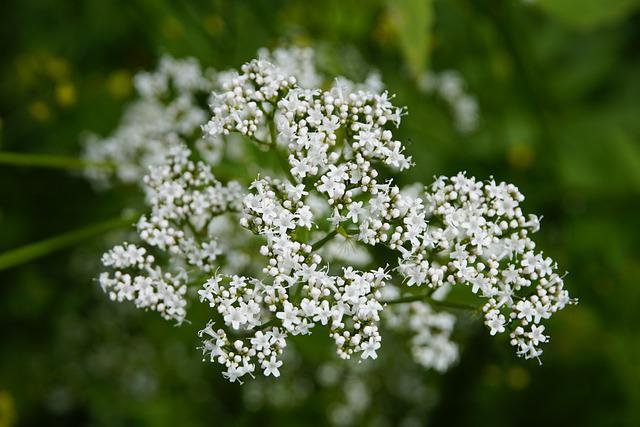Sleep is necessary for humans to stay alive. Sleep is thought to be a higher form of regulation, covering a range of molecular and cellular processes to provide optimal wakefulness. At least one of the functions of sleep is to provide recovery. Sleep facilitates recovery of fatigue acquired during daily exercise – it is also a major modulator of hormonal levels, cellular repair, and immune health. Sleep maintains physiological homeostasis in general and is necessary for the clearance of metabolites from the brain. (1, 2, 3, 4)
Sleep is a complex process however, making it difficult to separate its benefits. Sleep loss detriments, however, are far easier to identify and measure. Lack of sleep causes an increased incidence of driving accidents, on the job accidents and accidents in the home. (5, 6, 7)
There is growing evidence that poor sleep leads to a greater risk of developing degenerative diseases, including neurodegeneration, the risk of Type 2 diabetes and its complications, an increased risk of stroke and stroke mortality, an increased risk of developing and dying from cardiovascular disease, an increased risk of developing ADHD (Attention Deficit Hyperactivity Disorder) and an increase in all-cause mortality. (8, 9, 10, 11, 12, 13, 14)
The exact connections between insomnia, poor sleep quality and the risk of Alzheimer’s disease have only recently been delineated. Alzheimer’s disease is the most prevalent cause of dementia in the older population accounting for 65–70% of the cases. The formation of amyloid-β (beta amyloid, Aβ) plaques and neurofibrillary tangles are the hallmarks of Alzheimer’s disease.
The brain lacks lymphatic vessels for fluid and cellular debris clearance, and an alternative pathway exists for this. This pathway is called the glymphatic system, where fluids and oxidized proteins, namely amyloid-β and amyloid precursor protein (APP) are flushed into the cerebrospinal fluid. (15) This occurs almost exclusively during sleep, since amyloid- β and amyloid precursor protein are detected at much higher levels in the cerebrospinal fluid of healthy humans at night. (16) A 2018 study comparing amyloid-β production and excretion in the cerebrospinal fluid in participants who slept compared to those who had insomnia showed a 25% to 30% increase in amyloid-β in the fluid of those with insomnia. (17) Insomnia increases both the production of amyloid-β and the secretion of amyloid-β.
Persons with insomnia or poor sleep have a greater risk of developing Alzheimer’s or other forms of dementia. A systematic review and meta-analysis of sleep disturbances of 246,786 people showed insomnia was associated with a greater risk of developing Alzheimer’s disease, but sleep disordered breathing (SDB) was associated with a higher rate of all-cause dementia, vascular dementia, and Alzheimer’s disease. (9) Sleep disordered breathing includes snoring, sleep apnea and obstructive sleep apnea.

INGREDIENTS FOR INSOMNIA
Hops extract
The sedative effect of Hops extract has long been recognized based on over 30 years of traditional medicinal use in Europe. Recently, it has been suggested that the acids, essential oil, and other constituents, such as xanthohumol, may play an important role in the sedative effect of Hops preparations. (18)
Pure Hops extract in a non-alcoholic beer (0.00% alcohol, 333 ml. containing 0.3% or 100 mg. of Hops) was administered to a work-stressed population of healthy female nurses in rotating night shifts to measure the sedative effect of hops on their sleep and wake rhythm patterns. Overnight sleep parameters were assessed by an actigraph for fourteen days when the hops extract was given with dinner. The sleep data was compared with their own base data before Hops consumption began. (19)
Actigraphy demonstrated an improvement of night sleep quality as the most important primary assessment. The results showed that sleep latency (time to fall asleep) decreased in the Hops group, and anxiety on self-reported scores diminished in the same active treatment group. Hops extract reduced time to fall asleep (12 minutes compared to 21 minutes) by diminishing anxiety in this study. The study authors concluded that “The moderate consumption of non-alcoholic beer will favor night-time rest, due to its hop components, in addition to its other confirmed (health) benefits”. (19)
Six controlled clinical studies have been carried out with fixed combinations of Hops and Valerian root extracts that demonstrate the efficacy of these two herbs to improve sleep quality, shorten time to fall asleep, improve sleep brain wave patterns and improve subjective measures of restfulness after waking. (20, 21, 22, 23, 24, 25)
Hops extract has numerous other health benefits, including stimulating the production of antioxidant enzymes, protection of DNA against mutations, protection against thrombosis formation (blood clots) and protecting against benzopyrene and other dietary carcinogens. (26, 27, 28)
Valerian extract
Valerian, Valeriana officinalis, is a perennial herb native to North America, Asia, and Europe, and is used for its sedative and hypnotic properties. Multiple preparations are available, and the herb is commonly combined with other herbals, mainly Hops extract. Valerian has several other uses, including treating anxiety, depression, menopausal symptoms, and stress and is among the eight most widely used herbal supplements in the world. (29, 30)

In a double-blind, placebo-controlled randomized study, 405 volunteers 18 to 75 years old with insomnia kept a two-week diary both in the active Valerian group and the placebo group. At the end of two weeks, more volunteers in the valerian group judged their sleep as better or much better. There were similar favorable trends in the Valerian-treated group for night awakenings and sleep duration. There were no serious or minor adverse events in the study. (31)
| Sleep Duration | Valerian Group | Placebo Group |
| Improvement (%) | 30.2% | 22.7% |
| Night awakenings (%) | 15.8% | 9.9% |
Source: Oxman, A, Flottorp, S, Havelsrud, K, Fretheim, A. et al. PLoS One. 2007: 2 (10): e1040
Zizyphus Jujube extract
The Ziziphus jujuba plant seed extracts are the second most prescribed phytomedicine in Taiwan to treat insomnia. (32) Ziziphus jujube seeds are clinically comparable for treating insomnia with benzodiazepines, the primary medical treatment for insomnia and other sleep disorders in primary care practice. Ziziphus spinosa is a varietal of Ziziphus jujube and acts on GABA and serotonin receptors in the brain. (33)
The seed of Zizyphus jujuba spinosa variety has been used for psychiatric disorders in both Korean and Traditional Chinese Medicine (TCM). Recent research has demonstrated that Zizyphus jujube seed extract improves memory loss associated with most neurological diseases. (34) Ziziphus jujube spinosa seed extract blocked Amyloid β-induced memory deficits in a mouse model of Alzheimer’s disease. (34)

Jujubes
Ziziphus jujube seed extract is the most frequently used single herb in traditional Chinese medicine to treat insomnia. Ziziphus jujube seed enhances the inhibitory neurotransmitter GABA, when used as a single herb to treat insomnia or when it is the main ingredient in sour jujube seed decoction. (35)
The Chinese name for Ziziphus jujube is suanZaorentang.
One study of suanzaorentang for insomnia treatment was conducted by Chen and Hsieh in 1985. The study results showed that suanzaorentang statistically improved all ratings of sleep quality in insomniac patients when compared with a placebo. (36) Suanzaorentang also possesses the same anxiolytic (anti-anxiety) effects as that of diazepam, a benzodiazepine drug, in addition to its sedative-hypnotic effects. (37)
Glycine
Early research on Glycine and its essential role in sleep was published in 1989. (38) Later, in 2008, it was found that Glycine is responsible for the profound muscle relaxation that occurs during various stages of REM sleep. (39)
The first clinical trial using Glycine supplementation employed nineteen subjects ranging from 24 to 53 years old who were given 3 grams of Glycine or a placebo before bedtime. Their subjective quality of sleep was measured using the St Mary’s Hospital Sleep Questionnaire (SMHSQ) and the Space Aeromedicine Fatigue Checklist. Glycine significantly improved their feeling of fatigue the next morning, demonstrating that Glycine improves sleep quality. (40)
A second study with 3 grams of Glycine included eleven subjects whose initial test scores indicating repeated unsatisfactory sleep. Polysomnographic (PSG) examinations were performed throughout the night, and the subjective quality of sleep was evaluated using the same St. Mary’s measure as the first study. Daytime sleepiness the next day was assessed five different times using the Visual Analog Scale (VAS). Glycine subjectively improved the volunteers’ sleep efficiency, the satisfaction with their sleep and the difficulty of sleep onset. Daytime sleepiness was improved in the morning at all five time points measured. (41)
Both studies together indicate that glycine improves sleep quality both objectively and subjectively.
An earlier 2006 study showed that no serious side effects were observed by administering 31 grams per day of Glycine to humans. (42).
The results of all three trials indicates that Glycine improves sleep quality in a subjective and objective manner with no serious adverse effects.
An incidental benefit of Glycine supplementation was noted in a1999 double-blind study comparing healthy students and middle-aged men using tests that measured attention, memory, and mood. Compared with the young group, the middle-aged group had poorer verbal episode memory recall, sustained, focused, or divided attention. Glycine supplementation significantly improved episodic memory retrieval in both the young and the middle-aged groups. The middle-aged men saw an improvement in a sustained attention task. Glycine was different from other cognitive enhancing supplements because it had no stimulant properties or mood effects. Glycine improved memory rather than attention. The study authors concluded that “Glycine is likely to be of benefit in young or older people in situations where high retrieval of information is needed or when performance is impaired by jet lag, shift work, or disrupted sleep”. (43)
Pyridoxyl-5-Phosphate
Pyridoxal-5-Phosphate, or P5P, is the active metabolite of Vitamin B6. There are three forms of Vitamin B6 found in the diet or in supplements – pyridoxine, pyridoxamine or pyridoxal, usually as hydrochloride salts. (45) Vitamin B6 has a multitude of functions serving as a co-factor for a host of enzymatic reactions. Adequate levels of B6 are essential for promoting and maintaining mood, pain perception, and keeping inflammation and inflammatory markers, such as CRP at normal levels. (46, 47) However, pyridoxine and pyridoxamine must be converted by the liver into the active B6 form – Pyridoxyl-5-Phospahate. The problem is that this conversion to P5P can be impeded by age or in persons with impaired liver function. (48)
By supplementing with the active P5P – B6 form, conversion by the liver is no longer required, and the absorption and benefits of the active Vitamin B6 form are more immediate.
The effects of Vitamin B-6 supplementation on dreaming was investigated in a double-blind, placebo-controlled study to examine whether Vitamin B-6 increases the ability to recall dreams or dream vividness. College students were given either Vitamin B-6 or a placebo before bedtime for a period of five consecutive days. They self-reported a composite score that rated vividness, emotionality, bizarreness, and color of dreams. A significant difference in these dream measures increased in a B-6 group. The researchers concluded that “Vitamin B-6 may act by increasing cortical arousal during periods of rapid eye movement (REM) sleep. A hypothesis was presented involving the role of B-6 in the conversion of tryptophan to serotonin.” (49)
Vitamin B6 also helps control Nitric Oxide availability in the cell, and Nitric Oxide deficiency can cause artery vasodilation. Deficiencies in Vitamin B6 results in less methylation of the genes that produce Nitric Oxide, which, in turn, can trigger a migraine. (50) Vitamin B6 supplementation in sixty-six patients suffering from migraine was effective at reducing headache severity and the duration of migraine attacks. (50)
Magnesium
Magnesium is involved in over 300 enzyme-related biochemical processes, so it is not surprising that supplementation with Magnesium can improve various aspects of sleep.
Dietary magnesium supplementation brought about statistically significant increases in sleep time, sleep efficiency, and increased Melatonin levels in 46 older adults. Magnesium supplementation resulted in a significant decrease of sleep onset latency (time to fall asleep), and lower serum cortisol levels. Magnesium supplementation also resulted in marginal reductions in early morning awakening. Total sleep time did not show any significant differences in the Magnesium supplemented group, however. (51)
More time is spent awake and slow-wave sleep is reduced in people with sleep disorders. A study of people 60 to 80 years old supplemented with Magnesium led to a significant increase in their slow wave sleep. The study authors concluded that “Our results suggest that Mg (2+) partially reverses sleep EEG and nocturnal neuroendocrine changes occurring during aging.” (52)
Magnesium supplementation in person 51 years and older who had sleep problems relieved their inflammatory stress and corrected their magnesium deficiencies. (53)
Patients diagnosed with Magnesium deficiency have abnormal EEG readings during sleep with more nocturnal awakenings, less time spent in stage 5 REM sleep and self-reported poor sleep quality. (54)
People who are chronically sleep-deprived have significantly lower exercise ability and supplementation with Magnesium partially reverses this exercise intolerance. (55)
C-Reactive Protein is a general indicator of inflammation in the body and higher levels of CRP are associated with a higher risk of developing degenerative diseases of aging. (56)
A meta-analysis of clinical trials measuring Magnesium levels and C-Reactive Protein (CRP) found a direct relationship between dietary Magnesium intake and CRP levels. Regardless of whether the study subjects were male or female, children, or adults up to 85 years old, the lower the Magnesium intake, the higher the CRP levels. Furthermore, supplementation with Magnesium in five intervention studies using different salts and doses of Magnesium for relatively short durations (four weeks to four months), resulted in lower CRP levels. The mechanism behind Magnesium deficiency and higher CRP levels are that inflammatory cytokines, including IL-6 and tumor necrosis factor – TNF-α are released into the bloodstream and act as signaling molecules to promote the release of CRP from the liver as part of the acute phase response (as if the body was infected) and this further prolongs inflammation. (57)
Overall systemic inflammation caused by Magnesium deficiency will lead to sleep disturbances and supplementation with Magnesium lowers key inflammatory cytokine molecules, CRP, TNF- α, and IL-6.
Melatonin
Melatonin is a hormone produced by the pineal gland that is involved in controlling biorhythms in our body, which includes our sleep patterns. Melatonin levels decline with age and this is believed to play a role in age-related sleep disorders and age-related diseases. (58)
Melatonin has become one of the most frequently used non-prescription sleep aids. It plays an important role as a regulator of biological rhythms, which includes the promotion and regulation of sleep. (59) Melatonin helps promote total sleep time, recovery from jet lag fatigue, and can help balance circadian rhythm (the sleep-wake cycle) disruption from rotating shift work. (60) Mounting evidence suggests melatonin reduces the time it takes for people to fall asleep, also known as delayed sleep phase syndrome. (61)
In a systematic literature search of autism spectrum disorder and insomnia, Melatonin helped support normal sleep over placebo with large effects in sleep duration and sleep onset latency but with no difference observed in night-time awakenings. (62)
In a meta-analysis of 15 human trials which only included healthy people with insomnia, Melatonin treatment significantly reduced sleep onset latency by 3.9 minutes, increased sleep efficiency by 3.1% and increased total sleep duration 13.7 minutes. (63)
In addition to its sleep benefits, Melatonin has potent antioxidant properties, (64) lowers inflammatory markers and is and immune modulator. (65, 66) It also contributes to healthy cardiovascular function, (67) plays a role in eye health (68) and has effects on fat and glucose metabolism. (69) As a powerful free radical scavenger, Melatonin can directly remove excess free radicals produced during episodes of oxidative stress and can favorably change antioxidant gene expression. (70)
References:
- Benington JH, Heller HC. Restoration of brain energy metabolism as the function of sleep. Prog Neurobiol. 1995; 45:347–360.
- Berger RJ, Phillips NH. Energy conservation and sleep. Behav Brain Res. 1995; 69:65–73.
- Xie L, Kang H, Xu Q, et al. Sleep drives metabolite clearance from the adult brain. Science. 2013; 342:373–377.
- Siegel JM. Sleep viewed as a state of adaptive inactivity. Nat Rev Neurosci. 2009; 10:747–753.
- Åkerstedt, T., Philip, P., Capelli, A. & Kecklund, G. Sleep loss and accidents–work hours, life style, and sleep pathology. Progress in brain research 190, 169 (2011).
- Wade, AG. The Societal Costs of Insomnia. Neuropsychiatr Dis Treat. 2010 Dec 20; 7:1-18.
- Leger D, Massuel MA, Metlaine A SISYPHE Study Group. Professional correlates of insomnia. Sleep. 2006; 29(2):171–178.
- 8.Malhotra, RK. Neurodegenerative Disorders and Sleep. Sleep Med Clin. 2018 Mar;13(1):63-70.
- Shi L, Chen SJ, Ma MY, Bao YP, Han Y, Wang YM, Shi J, Vitiello MV, Lu L. Sleepdisturbances increase the riskof dementia: A systematic review and meta-analysis. Sleep Med Rev. 2017 Jul 6. pii: S1087-0792 (17) 30011-4
- Kawakami, N, Takatsuka, N, Shimizu, H. Sleep Disturbance and Onset of Type 2 Diabetes. Diabetes Care 2004 Jan; 27(1): 282-283.
- Bassetti, S. Sleep and stroke. Semin Neurol. 2005 Mar;25(1):19-32.
- Sofi, F, Cesari, F, Casini, A, Macchi, C, Abate R, Gensini, GF. Insomnia and risk of cardiovascular disease: a meta-analysis. Eur J Prev Cardiol. 2014 Jan;21(1):57-64.
- Um, YH, Hong, SC, Jeong, JH. Sleep Problems as Predictors in Attention-Deficit Hyperactivity Disorder: Causal Mechanisms, Consequences and Treatment. Clinical Psychopharmacol Neurosci. 2017 Feb; 15(1): 9–18.
- Li, Y, Zhang, X, Winkleman, JW, Redline, S, Hu, FB, Stampfer, M, et al. Association between insomnia symptoms and mortality: a prospective study of U.S. men. Circulation. 2014 Feb 18;129(7):73.
- Tarasoff-Conway J. M., Carare R. O., Osorio R. S., Glodzik L., Butler T., Fieremans E., et al. (2015). Clearance systems in the brain-implications for Alzheimer disease. Nat. Rev. Neurol.11, 457–470. 10.1038/nrneurol.2015.119.
- Boespflug, EL, Iliff, JJ. The Emerging Relationship Between Interstitial Fluid-Cerebrospinal Fluid Exchange, Amyloid-β, and Sleep. 2018 Feb 15;83(4):328-336.
- Ooms S, Overeem S, Besse K, Rikkert MO, Verbeek M, Claassen JAHR. Effect of 1 night of total sleep deprivation on cerebrospinal fluid β-amyloid 42 in healthy middle-aged men: a randomized clinical trial. JAMA Neurol. 2014; 71:971–977.
- Franco, L, Sanchez, C, Bravo, R. The sedative effects of hops (Humulus lupulus), a component of beer, on the activity/rest rhythm. Acta Phisiol Hung. 2012 Jun;99(2):133-9.
- Franco L, Sánchez C, Bravo R, Rodríguez AB, Barriga C, Romero E, et al. (2012) The Sedative Effect of Non-Alcoholic Beer in Healthy Female Nurses. PLoS ONE 7(7): e37290.
- Ross SM. Sleepdisorders: a single dose administration of valerian/hopsfluid extract is found to be effective in improving sleep. Holist Nurs Pract. 2009 Jul-Aug;23(4):253-6.
- Dimpfel W, Suter A. Sleepimproving effects of a single dose administration of a valerian/hopsfluid extract – a double blind, randomized, placebo-controlled sleep-EEG study in a parallel design using electrohypnograms. Eur J Med Res. 2008 May 26; 13(5):200-4.
- Koetter U, Schrader E, Käufeler R, Brattström A. A randomized, double blind, placebo-controlled, prospective clinicalstudy to demonstrate clinicalefficacy of a fixed valerian hops extract combination in patients suffering from non-organic sleep disorder. Phytother Res. 2007 Sep;21(9):847-51.
- Schellenberg R, Sauer S, Abourashed EA, Koetter U, Brattström A. The fixed combination of valerianand hops(Ze91019) acts via a central adenosine mechanism. Planta Med. 2004 Jul;70(7):594-7.
- Schmitz M, Jäckel M. Comparative study for assessing quality of life of patients with exogenous sleepdisorders (temporary sleeponset and sleep interruption disorders) treated with a hops-valarian preparation and a benzodiazepine drug. Wien Med Wochenschr. 1998;148(13):291-8.
- Müller-Limmroth W, Ehrenstein W. Experimental studies of the effects of Seda-Kneipp on the sleepof sleepdisturbed subjects; implications for the treatment of different sleep disturbances. Med Klin. 1977 Jun 24;72(25):1119-25.
- Dietz BM, Kang YH, Liu G, Eggler AL, Yao P, Chadwick LR, Pauli GF, Farnsworth NR, Mesecar AD, van Breemen RB, Bolton JL. Xanthohumol isolated from Humulus lupulus Inhibits menadione-induced DNA damage through induction of quinone reductase. Chem Res Toxicol. 2005; 18:1296–1305.
- Xin, G, Wei, Z, Ji, C, Zheng, H, et al. Xanthohumol isolated from Humulus lupulus prevents thrombosis without increased bleeding risk by inhibiting platelet activation and mtDNA release. Free Radic Biol Med. 2017 Jul; 108:247-257.
- Plazar, J, Zegura, B, Lah, TT, Filipic, M.Protective effects of xanthohumol against the genotoxicity of benzo(a)pyrene (BaP), 2-amino-3-methylimidazo[4,5-f]quinoline (IQ) and tert-butyl hydroperoxide (t-BOOH) in HepG2 human hepatoma cells. Mutat Res. 2007 Aug 15;632(1-2):1-8
- Pallesen S, Bjorvatn B, Nordhus IH, Skjerve A. Valeriana as a sleeping aid: a literature review. Tidsskr Nor Lægeforen. 2002; 122:2857–2859.
- Morris CA, Avorn J. Internet marketing of herbal products. JAMA. 2003; 290:1505–1509.
- Oxman, A, Flottorp, S, Håvelsrud, K, Fretheim, A. et al. PLoS One. 2007; 2(10): e1040. Published online 2007 Oct 17. A Televised, Web-Based Randomized Trial of an Herbal Remedy (Valerian) for Insomnia.
- Rodriguez Villanueva, J, Rodriguez Villanueva, L. 2017 Mar;31(3):347-365. Experimental and Clinical Pharmacology of Ziziphus jujuba Mills. Phytother Res. 2017 Mar;31(3):347-365.
- Shergis, JL, Ni, x, Sarris, J, Zhang, AL, et al. Ziziphus spinosa seeds for insomnia: A review of chemistry and psychopharmacology. Phytomedicine. 2017 Oct 15; 34:38-43.
- Kwon, H, Jung, IH, Yi, JH, Kim, T, et al. The Seed of Zizyphus jujuba var. spinosa Attenuates Alzheimer’s Disease-Associated Hippocampal Synaptic Deficits through BDNF/TrkB Signaling. Biological & Pharmaceutical Bulletin 2017, 40 (12): 2096-2104.
- Xiaojia, N, Shergis, J, Guo, X, et al. Updated clinical evidence of Chinese herbal medicine for insomnia: a systematic review and meta-analysis of randomized controlled trials. Sleep Medicine. Dec. 2015. Vol. 16, (12): 1462-1481.
- Chen H.C., Hsieh M.T. (1985) Clinical trial of suanzaorentang in the treatment of insomnia. Clin. Therapeut. 7: 334–337
- Chen H.C., Hsieh M.T., Shibuya T. (1986) Suanzaorentang versus diazepam: a controlled double-blind study in anxiety. Int. J. Clin. Pharmacol, Therapy Toxicol. 24: 646–650
- Chase MH. Evidence that glycine mediates the postsynaptic potentials that inhibit lumbar motoneurons during the atonia of active sleep. J Neurosci. 1989; 9:743–51.
- Soja, PJ. Glycine-Mediated Postsynaptic Inhibition is Responsible for REM Sleep Atonia. Sleep. 2008 Nov; 31(11):1483-6.
- Inagawa K, Hiraoka T, Kohda T, Yamadera W, Takahashi M. Subjective effects of glycine ingestion before bedtime on sleep quality. Sleep Biol Rhythms. 2006; 4:75–77.
- Yamadera W, Inagawa K, Chiba S, Bannai M, Takahashi M, Nakayama K. Glycine ingestion improves subjective sleep quality in human volunteers, correlating with polysomnographic changes. Sleep Biol Rhythms. 2007; 5:126–131.
- Inagawa K, Kawai N, Ono K, Sukegawa E, Tsubuku S, Takahashi M. Assessment of acute adverse events of glycine ingestion at a high dose in human volunteers. J Urban Living Health Assoc. 2006; 50:27–32.
- File SE, Fluck E, Fernandes C. Beneficial effects of glycine on memory and attention in young and middle-aged adults. J Clin Psychopharmacol. 1999 Dec;19(6):506-12.
- Merrill AH, Jr., Henderson JM. Diseases associated with defects in vitamin B6 metabolism or utilization. Annu Rev Nutr. 1987; 7:137-56.
- Johanson, S, Lindsted, S, Tiselius, S. Metabolic interconversions of different forms of vitamin B6. J Biol Chem. 1974 Oct 10;249(19):6040-6.
- Morris, M, Sakakeeny, L, Jacques, P. Vitamin B-6 Intake Is Inversely Related to, and the Requirement Is Affected by, Inflammation Status. J Nutr.2010 Jan; 140(1): 103–110.
- Friso S, Jacques PF, Wilson PW, Rosenberg IH, Selhub J. Low circulating vitamin B (6) is associated with elevation of the inflammation marker C-reactive protein independently of plasma homocysteine levels. Circulation. 2001; 103:2788–91.
- Russel, R. Factors in Aging that Effect the Bioavailability of Nutrients. J Nutrit.2001.131; 4, 1359S–1361S.
- Ebben M, Lequerica A, Spielman A. Effects of pyridoxine on dreaming: a preliminary study. Percept Mot Skills. 2002 Feb;94(1):135-40.
- Sadeghi, O, Nasiri, M, Maghsoudi, Z. Effects of pyridoxine supplementation on severity, frequency, and duration of migraine attacks in migraine patients with aura: A double-blind randomized clinical trial study in Iran. Iran J Neurol. 2015 Apr 4;14(2):74-80.
- Abbasi, B, Kimiagar, M, Sadeqhnaiiat, K.The effect of magnesium supplementation on primary insomnia in elderly: A double-blind placebo-controlled clinical trial. J Res Med Sci. 2012 Dec; 17(12): 1161–1169.
- Held, K, Antonijevic, IA, Kunzel, H., et al. Oral Mg (2+) supplementation reverses age-related neuroendocrine and sleep EEG changes in humans. Pharmacopsychiatry. 2002 Jul;35(4):135-43.
- Nielson, FH, Johnson, LK, Zeng, H. Magnesium supplementation improves indicators of low magnesium status and inflammatory stress in adults older than 51 years with poor quality sleep. Magnes Res. 2010 Dec; 23(4):158-68.
- Popoviciu L, Bagathai J, Buksa C, Delast-Popoviciu D, Bicher G, Delast-Popoviciu R, Covaciu S, Szalay E. Clinical and polysomnographic researches in patients with sleep disorders associated with magnesium deficiencies. In: Lasserre B, Durlach J, eds. Magnesium – a relevant ion. London: John Libbey, 1991: 353-65.
- Tanabe, K, Yamamoto, A, Suzuki, N, Osada, N, Yokoyama, Y. Efficacy of oral magnesium administration on decreased exercise tolerance in a state of chronic sleep deprivation. Jpn Circ J. 1998 May;62(5):341-6.
- McGeer, P, McGeer, E. Inflammation and the Degenerative Diseases of Aging. Ann NY Acad Sci. 2004, 1035: (1): 104-116
- Daniel T. Dibaba, Pengcheng Xun, Ka He. Dietary Magnesium Intake is Inversely Associated with Serum C-reactive Protein Levels: Meta-analysis and Systematic Review. Eur J Clin Nutr. 2014 Apr; 68(4): 510–516.
- Karasek, M. Melatonin, human aging, and age-related diseases. Exp Gerontol. 2004 Nov-Dec; 39(11-12):1723-9.
- Wagner J, Wagner ML, Hening WA. Beyond benzodiazepines: alternative pharmacologic agents for the treatment of insomnia. Ann Pharmacother. 1998; 32:680–691.
- Pandi-Perumal S, Srinivasan V, Spence D, Cardinali D. Role of the melatonin system in the control of sleep: therapeutic implications. CNS Drugs. 2007; 21:995–1018.
- Pevet P, Challet E. Melatonin: both master clock output and internal time-giver in the circadian clocks network. J Physiol Paris. 2011; 105:170–182.
- Rossignol, DA, Frye, RE. Melatonin in autism spectrum disorders: a systematic review and meta-analysis. Dev Med Child Neurol. 2011 Sep;53(9):783-92.
- Brzezinski, A, Vangel, MG, Wurtman, RJ. Effects of exogenous melatonin on sleep: a meta-analysis. Sleep Med Rev. 2005 Feb;9(1):41-50.
- Poeggeler B., Reiter R.J., Tan D.X., Chen L.D., Manchester L.C. Melatonin: A potent, endogenous hydroxyl radical scavenger. J. Pineal Res. 1993; 14:57–60.
- Mayo J.C., Sainz R.M., Tan D.X., Hardeland R., Leon J., Rodriguez C., Reiter R.J. Anti-inflammatory actions of melatonin and its metabolites, N1-acetyl-N2-formyl-5-methoxykynuramine (AFMK) and N1-acetyl-5-methoxykynuramine (AMK), in macrophages. J. Neuroimmunol. 2005; 165:139–149.
- Carrillo-Vico A., Reiter R.J., Lardone P.J., Herrera J.L., Fernandez-Montesinos R., Guerrero J.M., Pozo D. The modulatory role of melatonin on immune responsiveness. Curr. Opin. Investig. Drugs. 2006; 7:423–431.
- Bielli A., Scioli M.G., Mazzaglia D., Doldo E., Orlandi A. Antioxidants, and vascular health. Life Sci. 2015; 143:209–216.
- Lundmark P.O., Pandi-Perumal S.R., Srinivasan V., Cardinali D.P., Rosenstein R.E. Melatonin in the eye: Implications for glaucoma. Exp. Eye Res. 2007; 84:1021–1030.
- Koziróg M, Poliwczak AR, Duchnowicz P, Koter-Michalak M, Sikora J, Broncel M. Melatonin treatment improves blood pressure, lipid profile, and parameters of oxidative stress in patients with metabolic syndrome. J Pineal Res. 2011 Apr;50(3):261-6.
- Mayo J.C., Sainz R.M., Antoli I., Herrera F., Martin V., Rodriguez C. Melatonin regulation of antioxidant enzyme gene expression. Cell. Mol. Life Sci. 2002; 59:1706–1713.


